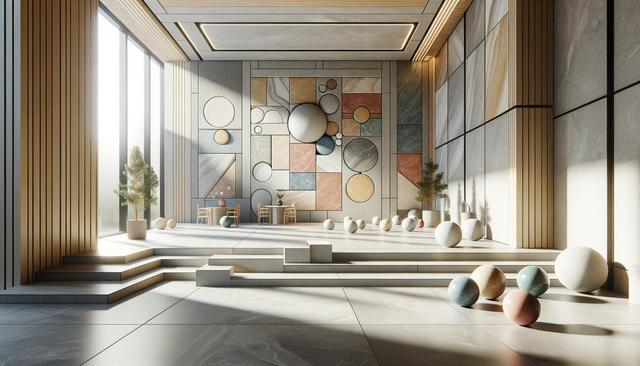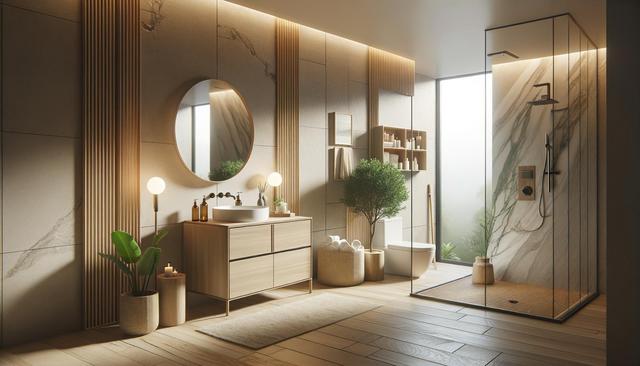Natural and Earthy Textures Take Center Stage
One of the defining characteristics of 2025 stone paneling trends is the emphasis on natural and earthy textures. Designers are turning to organic finishes that bring the raw beauty of the outdoors into interior and exterior spaces. These textures not only create a visual impact but also add a tactile dimension that enhances the sensory experience of a room. From rough-cut slate to hand-chiseled limestone, the trend is moving away from overly polished surfaces in favor of more authentic, rugged aesthetics.
Homeowners and architects are increasingly drawn to stone paneling that mimics natural rock formations, incorporating imperfections and irregularities as design features. This approach aligns well with the broader move toward biophilic design, which aims to connect people with nature through architecture and interiors. Some of the most popular earthy textures include:
- Split-face granite for accent walls
- Rough limestone for fireplace surrounds
- Weathered travertine for exterior facades
These finishes not only provide visual warmth but are also incredibly durable, making them ideal for both residential and commercial applications.
Eco-Friendly Materials Are on the Rise
As sustainability continues to be a top priority, 2025 is seeing a surge in demand for eco-friendly stone paneling solutions. Materials that are responsibly sourced and have a minimal environmental footprint are gaining traction across the design world. One standout option is Stonelite panels, which combine real stone veneer with lightweight backing materials to reduce weight and resource consumption. These panels offer the look and feel of natural stone while being easier to transport and install, reducing the overall carbon footprint of a project.
In addition to lightweight stone veneers, other sustainable choices include recycled stone composites and panels made from reclaimed materials. These products appeal to environmentally conscious consumers and help meet green building certifications. Key benefits of eco-friendly stone paneling include:
- Significant reduction in transportation emissions
- Lower structural load requirements
- Compatibility with energy-efficient building designs
By choosing sustainable options, homeowners and developers can enjoy the timeless appeal of stone while contributing to a more sustainable future.
Mixed Finishes for Dynamic Visual Impact
Another trend making waves in 2025 is the use of mixed finishes within the same paneling design. This approach combines different textures, sheens, and stone types to create visually engaging and multidimensional surfaces. For instance, a wall might feature a combination of honed marble and rough granite, or smooth limestone paired with hammered basalt. This fusion of finishes adds depth and character, turning a simple wall into a dynamic focal point.
Mixed finishes are particularly popular in open-concept spaces where visual continuity is key. Designers are using them to transition smoothly between areas like kitchens and living rooms or indoor and outdoor spaces. Popular applications include:
- Accent walls in entryways or living areas
- Feature walls in commercial lobbies
- Backsplashes and shower walls in bathrooms
This trend encourages creativity and personalization, allowing homeowners to craft spaces that reflect their individual style while staying on the cutting edge of design.
Lightweight Solutions for Modern Living
Stone paneling has often been associated with heavy, labor-intensive installation. However, the 2025 trend landscape is shifting toward lightweight solutions that maintain the elegance of stone without the bulk. Innovations like Stonelite panels have made it possible to install natural stone finishes on a wider range of surfaces, including ceilings, cabinetry, and even furniture. These panels are composed of a thin stone veneer bonded to a composite backing, offering strength and flexibility in equal measure.
Lightweight stone panels are also easier to customize and cut, making them ideal for modern design projects that demand precision and adaptability. Their reduced weight means they can be used in high-rise buildings and retrofitting projects where traditional stone would be impractical. Key advantages include:
- Faster installation times
- Reduced structural reinforcement needs
- Enhanced versatility for creative applications
These practical benefits are driving increased adoption among architects and interior designers, particularly in urban environments where efficiency and flexibility are crucial.
Color Trends: From Warm Neutrals to Bold Statements
Color is playing a more prominent role in stone paneling design for 2025. While classic neutrals like beige, gray, and taupe remain popular, there is a noticeable shift toward incorporating bolder tones to create dramatic visual effects. Deep greens, rich browns, and even charcoal blacks are emerging as statement colors, used to highlight architectural features or define distinct zones within a space.
These richer hues are often found in stone types such as serpentine, basalt, or oxidized slate, offering both visual intrigue and a strong connection to nature. Designers are also experimenting with color-enhanced finishes that bring out the natural veining and patterns in the stone. Notable color trends for 2025 include:
- Earthy terracottas for a Mediterranean feel
- Soft pinks and blush tones for a modern, subtle twist
- Charcoal and deep navy for bold, contemporary spaces
Whether used in minimalist interiors or more eclectic designs, these color choices add personality and depth without overwhelming the space.
Conclusion: Designing with Purpose and Style
The stone paneling trends of 2025 reflect a broader movement toward thoughtful, sustainable, and expressive design. From earthy textures and mixed finishes to lightweight panels and bold colors, these trends offer a wealth of options for those looking to elevate their spaces with timeless materials. Whether you’re an interior designer, architect, or homeowner, embracing these innovations allows for the creation of environments that are not only visually striking but also aligned with modern values of sustainability and functionality. By integrating these forward-thinking approaches, your next project can be as responsible as it is refined.


